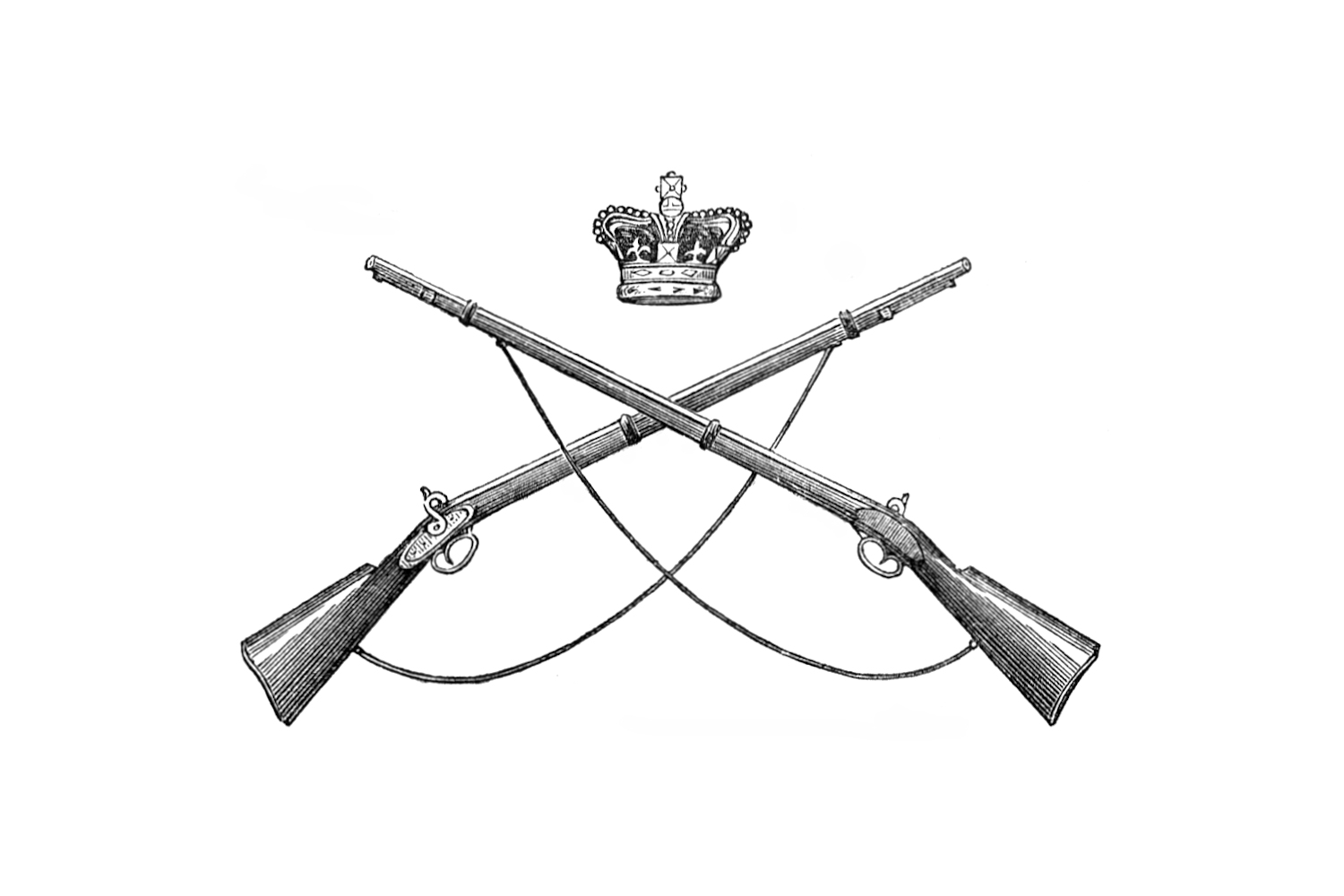The 1st February 1859 saw the beginning of the new series of smaller format Musketry Instructions now more grandly entitled “Regulations For Conducting The Musketry Instruction Of The Army.” Popular at the time are the Official Pocket Editions of some of these manuals. Bound in red leather and secured by a hinged brass clasp they are attractively embossed with the full Royal Arms and the title.
Category: Military Marksmanship
For the soldier to take advantage of the advances in firearms technology, so musketry instruction needed to evolve to meet changing military tactics and capabilities.
Browse the latest posts below, or see:
‘Pickets’ versus Bullets
THE old regulation-musket, known in the army by the affectionate sobriquet of ‘Brown Bess,’ would sometimes, though not always, carry a bullet with a certain degree of precision about a hundred yards; but beyond that very moderate distance, no one, however expert, could make sure of hitting even a barn-door; the aim of the individual who pulled the trigger having very little to do with the direction taken by the projectile. We have lately had an opportunity of seeing a great many men trained to the use of the new arm; and it may interest the reader to learn something of the process by which the lad who has perhaps never fired a shot in his life, is converted into a more or less skilful rifleman.
Rifle Instruction in the USA
In the immediate post-Civil War years in America, there was understandably little interest in marksmanship or military matters from the general public. Whilst the US National Guard received plenty of drill and marching instruction there was scant, if any, marksmanship training. The impetus for the development of marksmanship skills within America’s National Guard units came from the pages of the Army and Navy Journal.
Instructors of Musketry
“Sir – Additional candidates being required for the corps of permanent instructors of musketry now in the course of organisation under the regulations issued from this department on the 13th of August last, I received the commands of Field-Marshal Viscount Hardinge again to call upon you to furnish the names of any men belonging to the regiment under your command who may be eligible and willing to be transferred to the corps in question.”
The School of Musketry, Hythe
Situated in a remote corner of the kingdom, on the coast of Kent, about 18 miles from Dover, is this our new military establishment, of the existence of which the great majority of the public are probably not aware. It owes its origin to the introduction of the Minié rifle into the army, and has been established little more than a year and a half, or since April 1853. Guided by his experience of our military system, the Commander-in-Chief judged that, if it were left to the commanding officers of regiments to see that the men under them were properly instructed in the use of the new weapon, he should fail of securing throughout the army that uniformity of practice so essential to the efficiency of the service, and advised the creation of a special establishment which might serve at once as a training school for our infantry and marines.
Hythe School of Musketry
INDEX. The School of Musketry was established at Hythe, in Kent, in 1853.
Chalons – The Camp
At present, in respect of arms and riflemen, England is in advance of the armies of the world. The Enfield rifle, in accuracy, workmanship, and general efficiency, is the best weapon carried by any soldier. Other arms are looming in the distance which will be to it what it was to Brown Bess. Indeed there seems no definite limit to projectile power. Whether the powers of man to use it will keep pace with its progress, will be the next problem. At present, man is up to the mark of the weapon – in fact, trained marksmen show an ability to shoot and hit at distances where, as a rule, the Enfield begins to fail in accuracy.
Indian Mutiny Long Shots
This short account is extracted William Forbes-Mitchell’s ‘Reminiscences of the Great Mutiny 1857-59’. It provides some interesting first hand comment on the effect of shooting a fouled muzzle loading Enfield rifle, and on the effectiveness of long range volley fire on artillery crews
Life in a Crimea Rifle Pit
This letter extract is reprinted from the Morning Chronicle (London), Monday 14 May 1855. It provides an interesting first hand account of life in a rifle pit during the Crimean War. Of particular note is the long range marksmanship with the newly issued Enfield rifle, together with comment on shooting in conjunction with a spotter whilst firing upon gunners.
Military Marksmanship
INDEX. For the soldier to take advantage of the advances in firearms technology, so musketry instruction needed to evolve to meet changing military tactics and capabilities.
